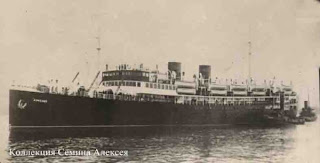Role Description: The Prediction and Management of Marine Biodiversity Project is seeking a motivated and enthusiastic research scientist to investigate the degree to which marine biophysical data can be used as surrogates of marine benthic habitats and marine biodiversity. The position forms a key component of this multidisciplinary project, which comprises a team of marine scientists based at Geoscience Australia and partners at CSIRO, the University of Tasmania, AIMS and the Museum of Victoria. The outputs of the project will be used to support the sustainable management of Australia’s marine environment. This position is available immediately for a period of three years.
Role Duties: 1.Conducting innovative research into biophysical variables useful as surrogates of benthic habitats and for the prediction of patterns of biodiversity; 2.Apply/develop statistically robust methods for comparing abiotic variables with the distribution of marine biota over a range of spatial scales in both shallow- and deep-sea environments; 3.Developing new and/or applying existing methods to extract biological information from underwater video footage and sediment samples of the seabed; 4.Writing scientific publications and technical reports in conjunction with other project scientists; and 5.Disseminating research outcomes at forums and conferences.
Special Requirements: •Relevant tertiary qualifications, PhD or equivalent, in benthic marine ecology, biology or geology, and/or a related field of marine science. •Experience in the statistical analysis of benthic marine ecological data is a pre-requisite. •A record of peer-reviewed scientific publications in marine ecology, geology or other appropriate field; •Experience in spatial science/GIS; •Experience working effectively as part of a small team to achieve project outcomes; •Experience or expertise in marine geoscience is highly-desirable.
Key Relationships: The position will be located within the Marine and Coastal Environment Group of Geoscience Australia. You will report to the Project Leader of the Marine Biodiversity Hub Project, and work closely with CERF Hub partners at CSIRO Marine and Atmospheric Research in Brisbane, University of Tasmania Hobart, AIMS Townsville and Museum of Victoria, Melbourne. Internal: Application Support and Product Development, Labs, Sample repository External: Marine and Biodiversity Branch of Department of Environment & Water Resources, CSIRO, AIMS, UTAS, Museum of Victoria, APPEA, AMSA, WWF.
Additional Details:
Geoscience Australia Band / Level: Band 2 Level 4 (APS 6)
Division/Branch: Petroleum and Marine Division
Specified Task Duration:: 3 Years
Specified Task:: To investigate the degree to which marine biophysical data can be used as surrogates of marine benthic habitats and marine biodiversity.
Salary Band: Band 2 Level 4 – from $66,055 to $73,520
Employment Type: Full Time
Security Level: Protected
Functional Stream: Scientific
Project/Section: Marine & Coastal/ CERF
Shortlisting Question One:
Selection is competitive, and will be on the basis of an assessment of candidates’ work-related qualities and those required for performance of the duties, as well as the capacity to achieve outcomes related to the duties, as reflected in the Role Profile.
For short-listing purposes, please tell us about your experience in using statistical methods to determine relationships between benthic biota and physical variables, or similar related work. Please also document your experience working as part of a team that is relevant to this position.
It is in your interest to relate your statements, as far as practicable, to the requirements of the job as set out in the Role Profile.
Contact Officer: Brendan Brooke
Contact Officer Phone: 02 6249 9434
Contact Officer Email: Brendan.Brooke@ga.gov.au


